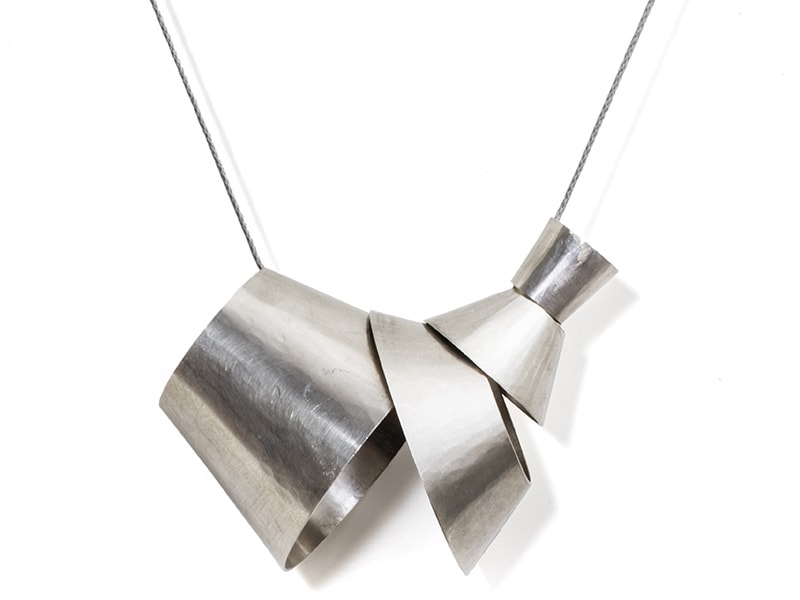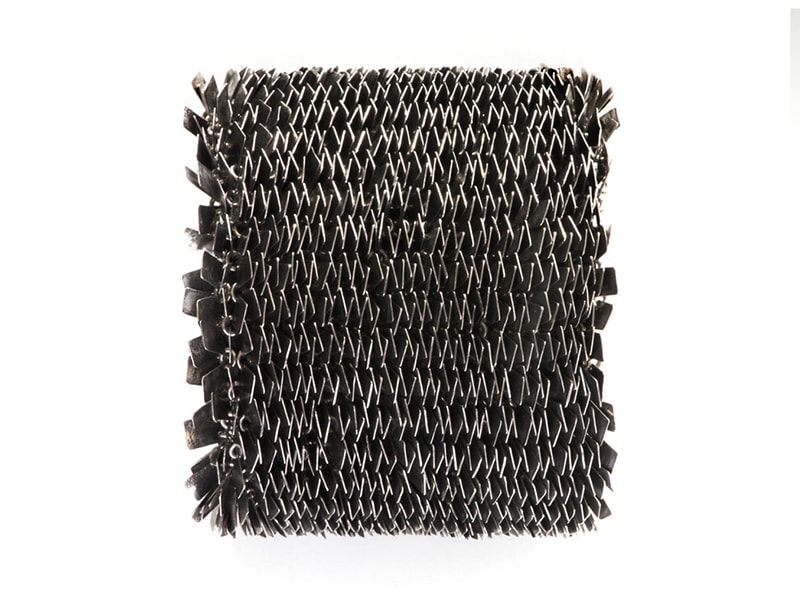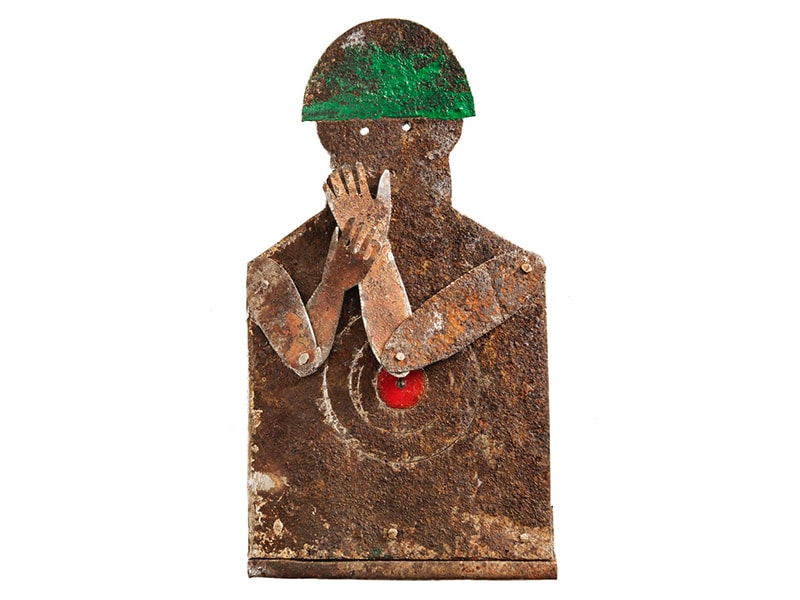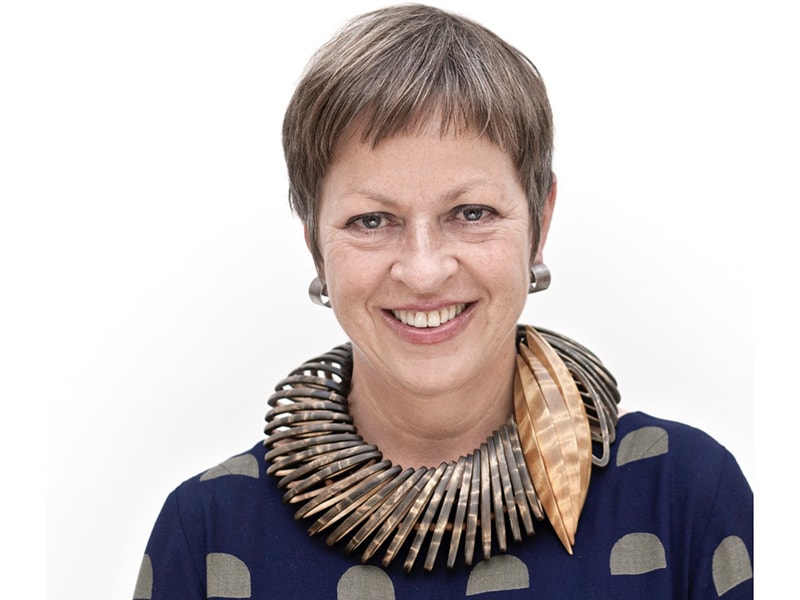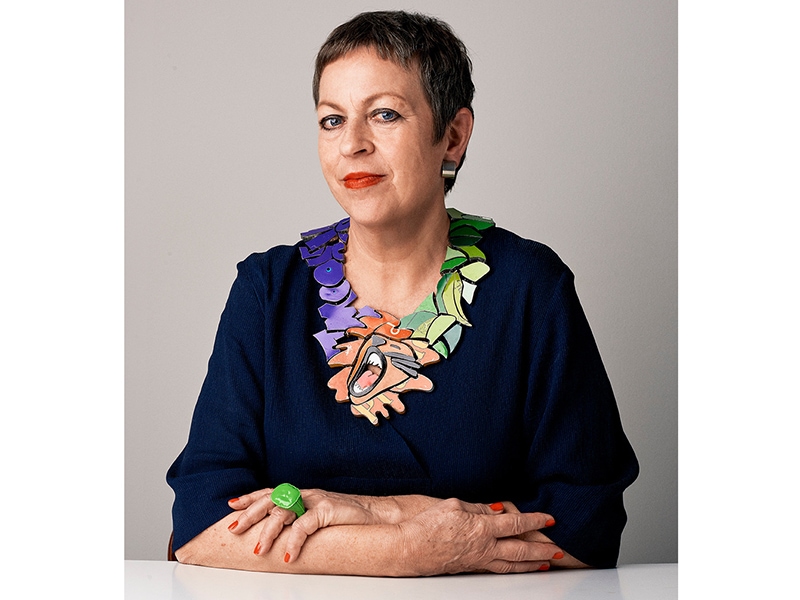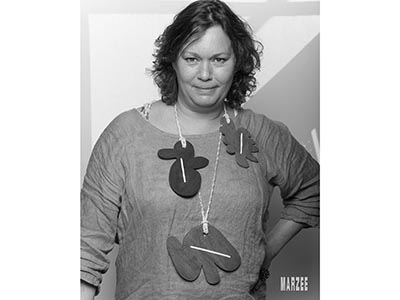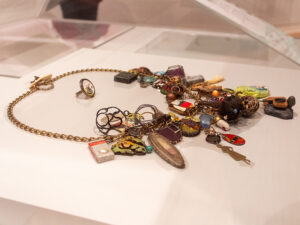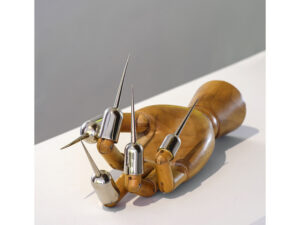The Jewellery Box chronicles Jorunn Veiteberg’s jewelry collection. Our reviewer calls it one of the best books about jewelry ever.
- Life-sized photos of the pieces—presented in order of purchase—appear almost from the start. Refreshing!
- Veiteberg examines her motivation to collect, shining a light on this human urge
- The author quotes from her diaries and talks about jewelry she received as a child. A few dozen photos show Veiteberg herself wearing jewelry, so we see it performing its function
- Veiteberg tells her life story on the basis of jewelry. She relates her personal choices to theory in a way anyone can understand
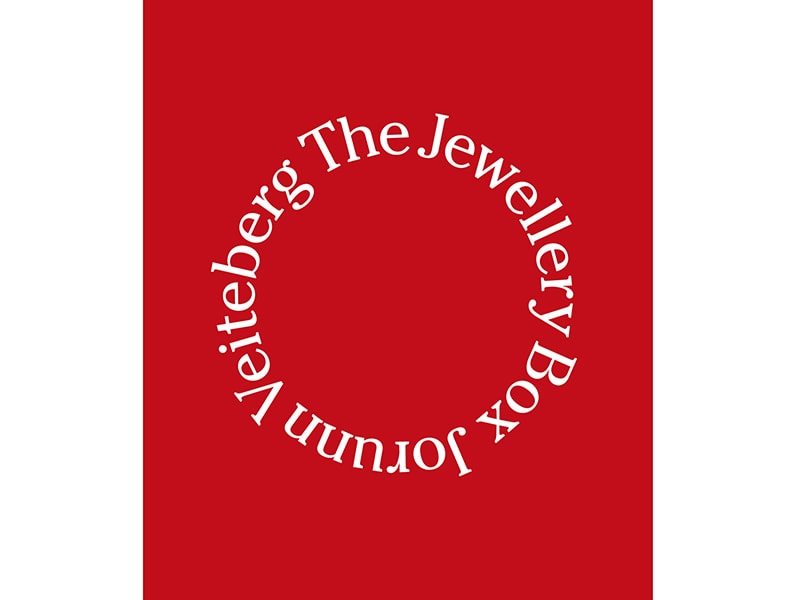
Jorunn Veiteberg, The Jewellery Box, Stuttgart: Arnoldsche, 2021.
One of my favorite jewelry books came out in 2021: The Jewellery Box, by Jorunn Veiteberg. It has a bright red matte cover with white letters, it looks compact, and it opens like a jewelry box. Art historian and collector Veiteberg (1955) dedicated it to Mogens Krabek (1949–2020), her late husband. Just as the dedication is personal, so is the book.
The idea for it came up in autumn 2018. This was when the exhibition These Are a Few of Her Favourite Things: Jorunn Veiteberg’s Collection of Jewellery was shown in the Nordenfjeldske Kunstindustrimuseum, in Trondheim, Norway. The exhibition had forced Veiteberg to finally catalogue her collection. This perfectly shows how the importance of cataloguing is underrated.
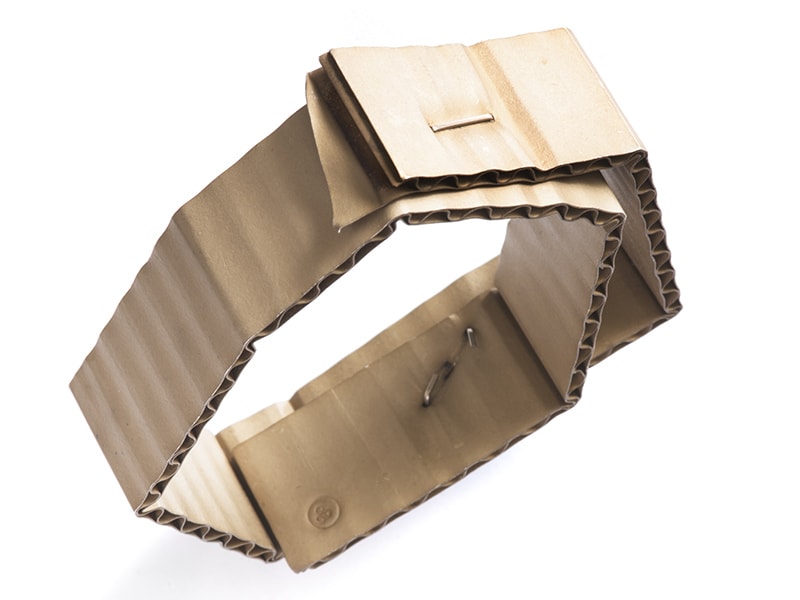
copyright David Bielander, photo courtesy of Arnoldsche Art Publishers
After a short introduction of five pages of text, the book immediately starts with images of Veiteberg’s personal collection. This is striking. Most publications start with a few essays first, followed by the catalog. Here the collection is presented right away—how refreshing! It makes perfect sense. After all, that’s what the book is all about.
Charlotte
In the foreword, Veiteberg introduces Charlotte first. Charlotte is a storage unit designed by Martine Bedin (1957). Bedin was one of the founders of Memphis, the Italian design and architecture group. Veiteberg first saw the cabinet at an exhibition in 1990 at Galleri F 15, in Moss, Norway, where she worked as a curator. After the exhibition, Veiteberg bought the piece of furniture and began storing her jewelry in it. Until 2000, Charlotte had enough space to hold this collection. Later, IKEA furniture was added to store the overflow.
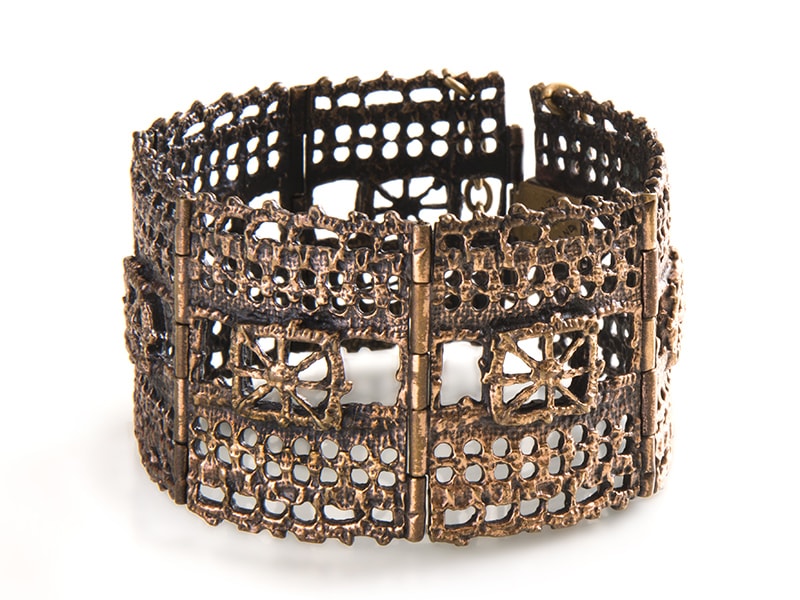
An omniverous collector
Veiteberg has been collecting since childhood. By 2021, her jewelry collection consisted of about 550 objects. The collection then contained work made by 210 different mostly well-known jewelry designers from 30 countries. It includes cheap mass-produced jewelry, and buttons, too.
In this great book, Veiteberg shines a light on the human urge to collect. She examines her own motivation, using terms from psychoanalysis such as “narcissism” and “exhibitionism,” all related to the impulse to collect. She discovered that “much of what is written about collecting is comparable to psychiatric diagnoses.”
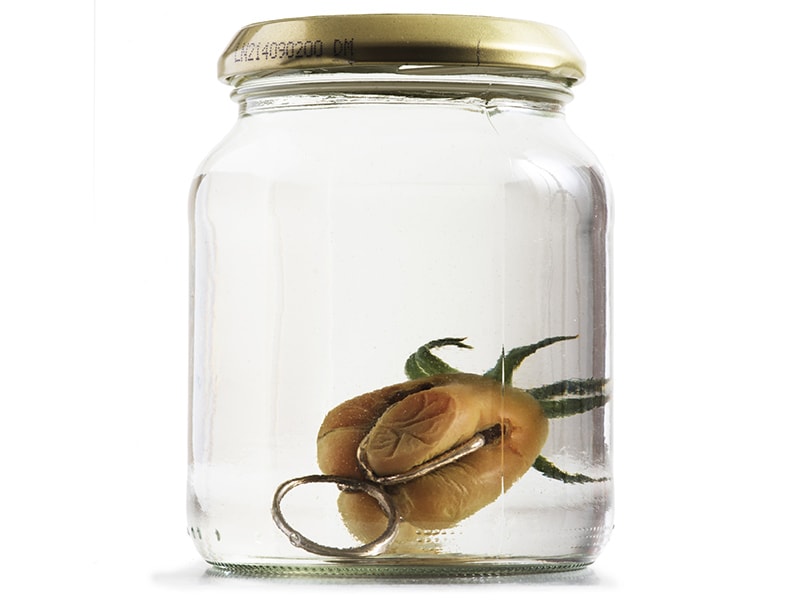
Wearability becomes less important
Veiteberg says the more jewelry a person owns, the less important its wearability becomes. She also states that a collection of jewelry is part of someone’s biography. Many jewels mark a special occasion. This is shown in her personal gallery of portraits. Veiteberg sees jewelry as a means of communication. She considers it a problem that it is often photographed without wearers. This happens because human models are seen as detracting from the concept of jewelry.
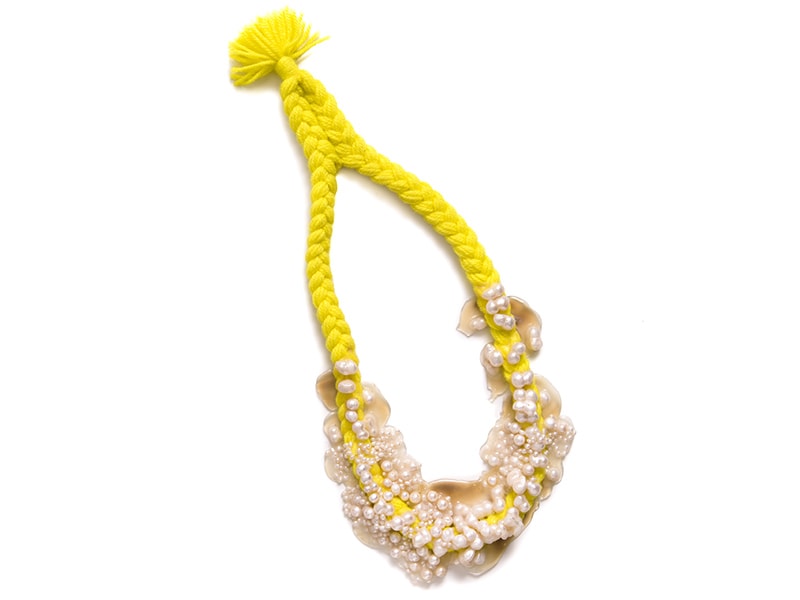
Little monetary value
Veiteberg’s collection contains hardly any jewelry made of gold or precious stones. In this, she keeps pace with developments in Norway (and several other countries) regarding the use of materials among jewelry designers in the 1970s.
In that period, expressing social status with monetary value materialized through jewelry was criticized. Jewelry designer Konrad Mehus was one of the pioneers in this area. He is therefore one of the focal points in the Veiteberg collection, along with jewelry designers Toril Bjorg and Tone Vigeland. Much of Veiteberg’s jewelry relates to the concept of value.
Veiteberg describes how the art scene in Norway changed in the 1970s. Fairs made artists less dependent on wealthy clients and this let artists operate more independently and stay away from commerce.
Memories from diaries
In the section called A Biography in Buttons, Veiteberg describes her earliest memories of the jewelry box. She talks about the jewelry she received as a child. It is a personal and moving story. She quotes from her diaries and describes how she was slightly left out in high school because of her quirky way of dressing. She mainly found friendships and support in feminism and literature.
Veiteberg also talks about the battle with her parents to have her ears pierced. It just was not done in her family. When she went to live by herself, at age 18, Veiteberg pierced her earlobes herself with a darning needle. It was a rebellious act.
Veiteberg talks about her jewelry in a personal way. For example, when her mother’s pacemaker was replaced, she had a brooch made from its remains. This story completely links the object and its owner. If not stored well, the jewel would lose all its meaning.

Buttons for communication
Like many others, Veiteberg has worn buttons. Because buttons say something about her life, Veiteberg includes them in her jewelry collection. She owns buttons against Norway joining the European Economic Community, for equality between women and men, and that support people with HIV.
When Barack Obama was campaigning for the presidency of the United States, in 2008, some white voices wondered if he was suitable because of his skin color. Benjamin Lignel made buttons that read “Thank God I’m White.” Lignel was talking about white privilege. Veiteberg has this button in her collection, but has never worn it. It would be too easy for someone to misunderstand its meaning and mistake her for a white supremacist.
Chronological, yet different
The introduction is followed by life-sized photos of the pieces from the Veiteberg collection. This catalog selection is presented in chronological order by date of Veiteberg’s purchase. In the back of the book, the same jewelry is shown again, much smaller and sorted alphabetically by the maker’s name, with the object data listed. This index is not very helpful.
A few pieces of jewelry are shown in miniature with numbers listed, but with no maker’s name. How to find these numbers is unclear. There is no explanation. I searched the catalog again, which was a pleasure, but not very efficient.
Personal photos and travels
Veiteberg takes the reader to the cities, galleries, and museums she regularly goes to in connection with jewelry. She mentions the unique sexual exhibition policy of Galerie Ra, in Amsterdam, which focused on gay makers, for example. She also describes the dynamics in the Burg Giebichenstein study program, in Halle, Germany, which she visited.
The very readable essays are followed by a few dozen photos of Veiteberg herself wearing jewelry. They are a great addition to the previous images and texts. We get to see jewelry performing its function, or shown in the context for which it was made.
And finally—woohoo!—the book has an index! I would rather see an index than the inconsistent set of biographies that regularly appear in many jewelry books today, though fortunately not in this one.

One of the best books about jewelry ever
It is striking and admirable how Arnoldsche Art Publishers continuously delivers books with a completely different but always strong appearance. They’re always looking for the best match between the author, the subject matter, and the graphic designer. That is a great formula.
In this book, Veiteberg tells her life story on the basis of jewelry. It makes this publication an interesting and important personal document.
This very personal publication by Jorunn Veiteberg almost reads like a novel. It has a completely authentic character, too. It is moving, recognizable, intelligent, and makes sense. To me, this publication is one of the best books about jewelry ever because it relates personal choices to theory without getting abstract.
